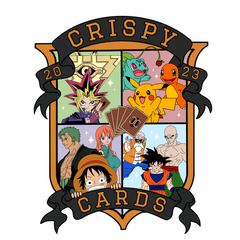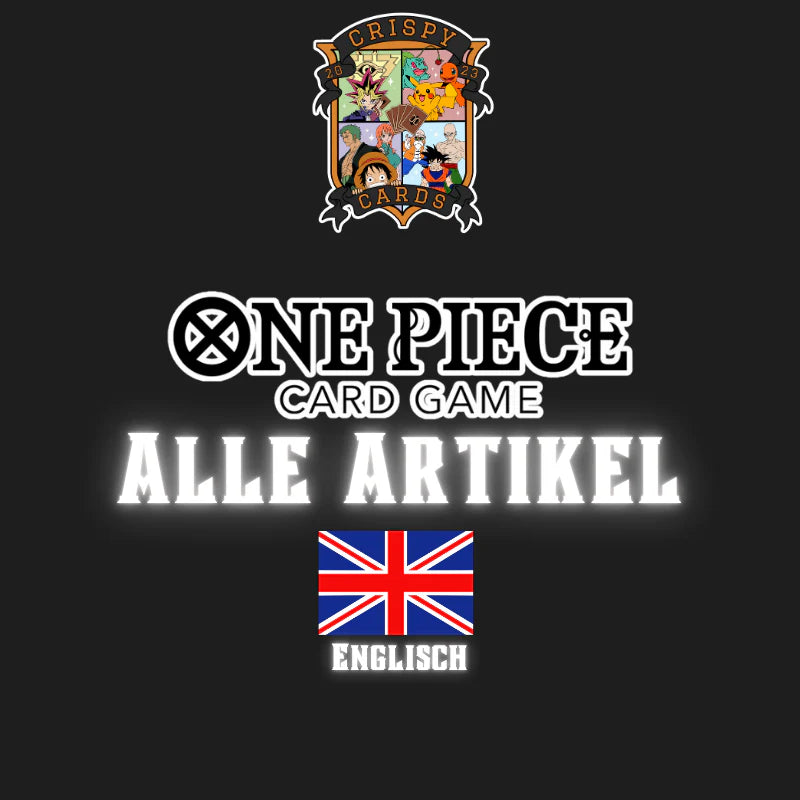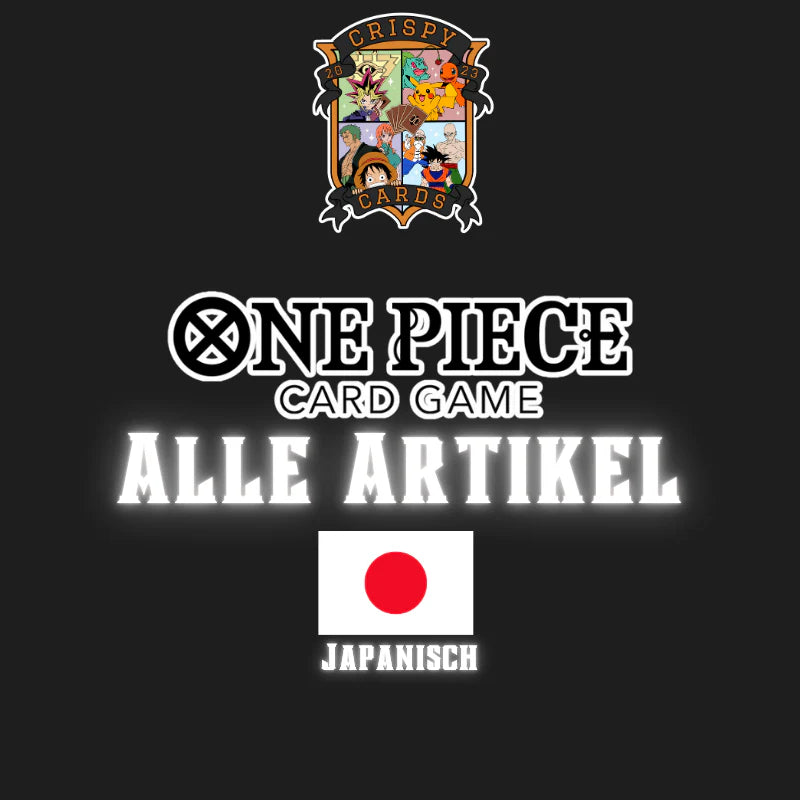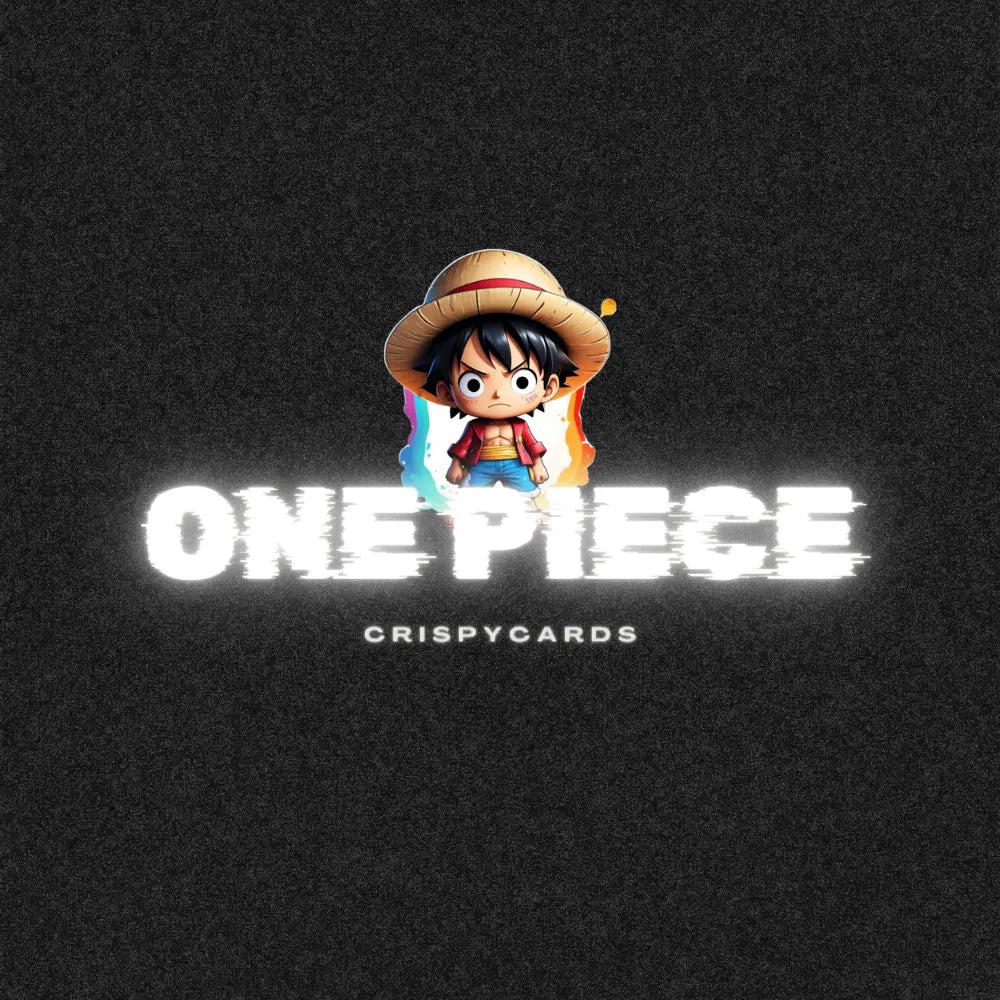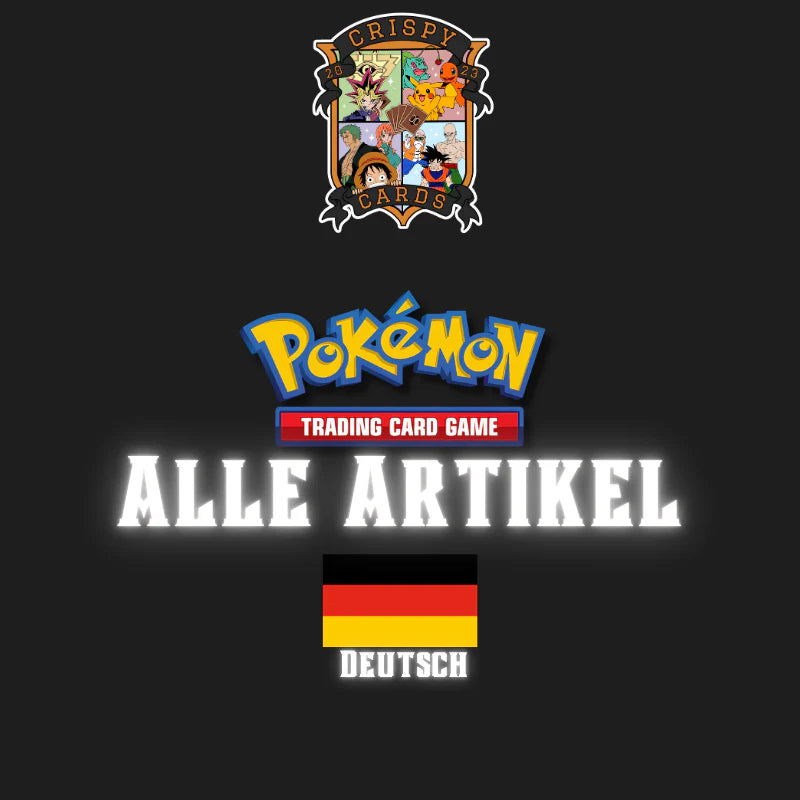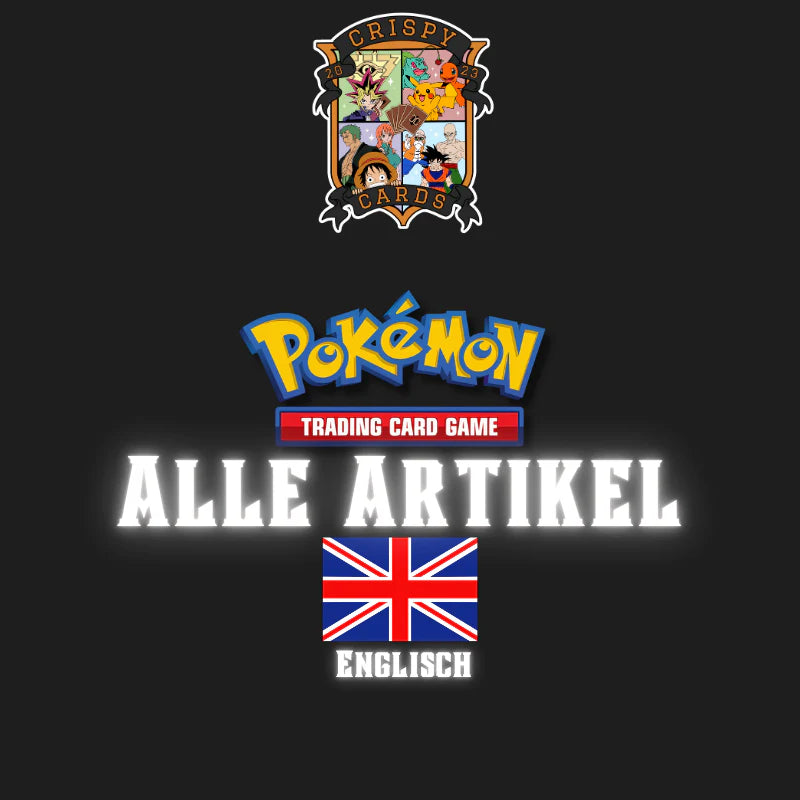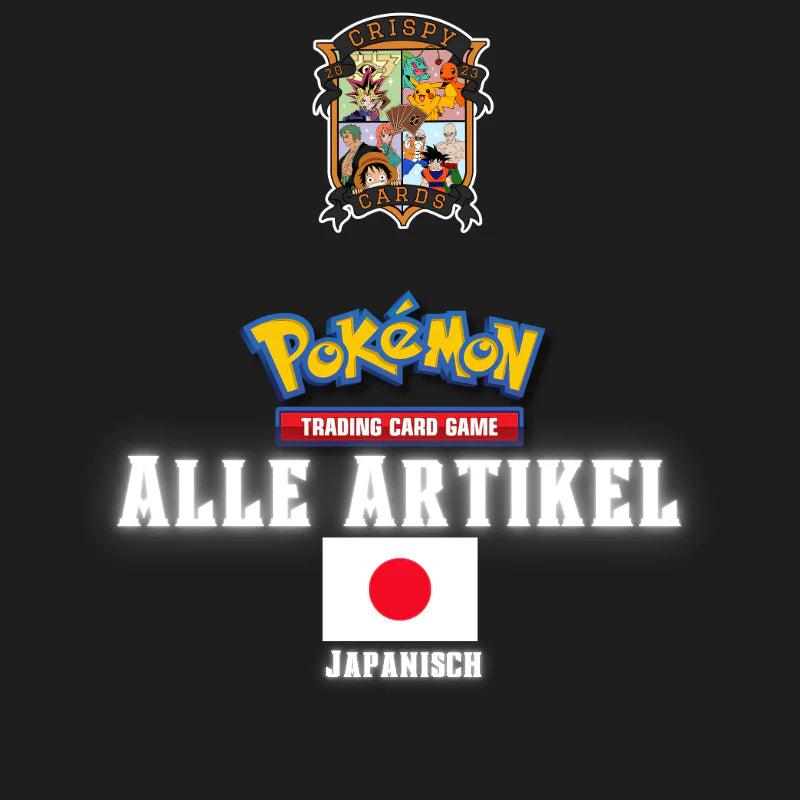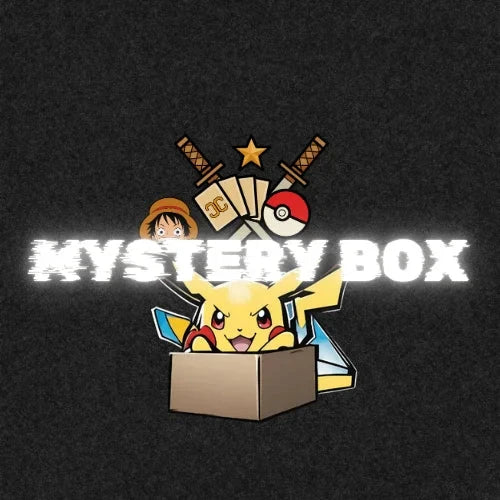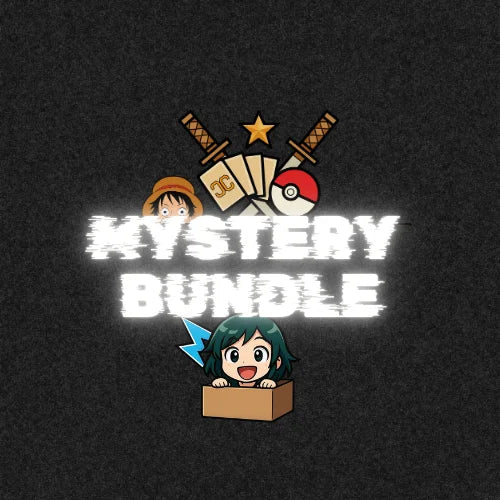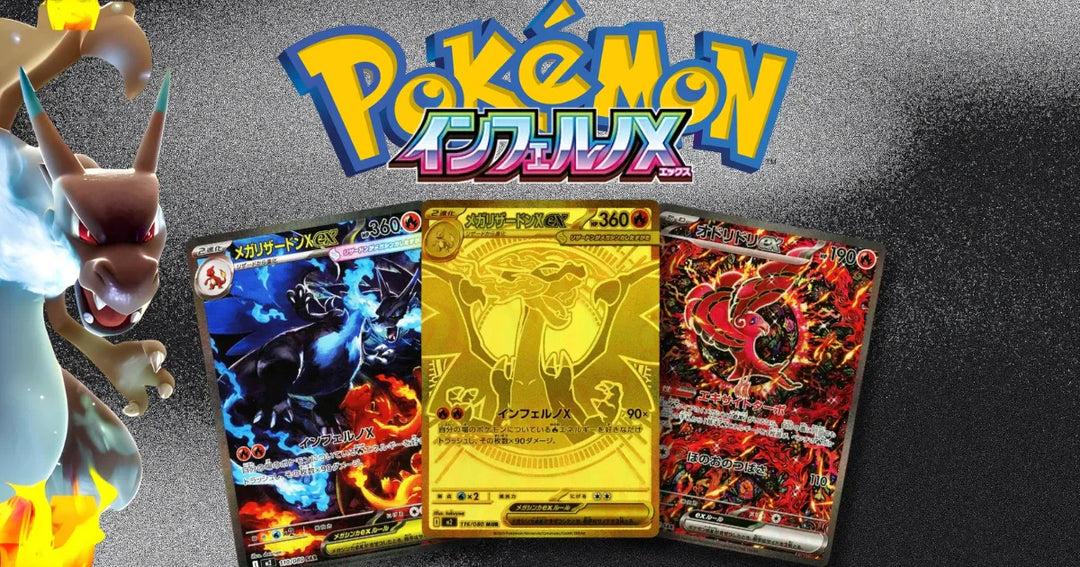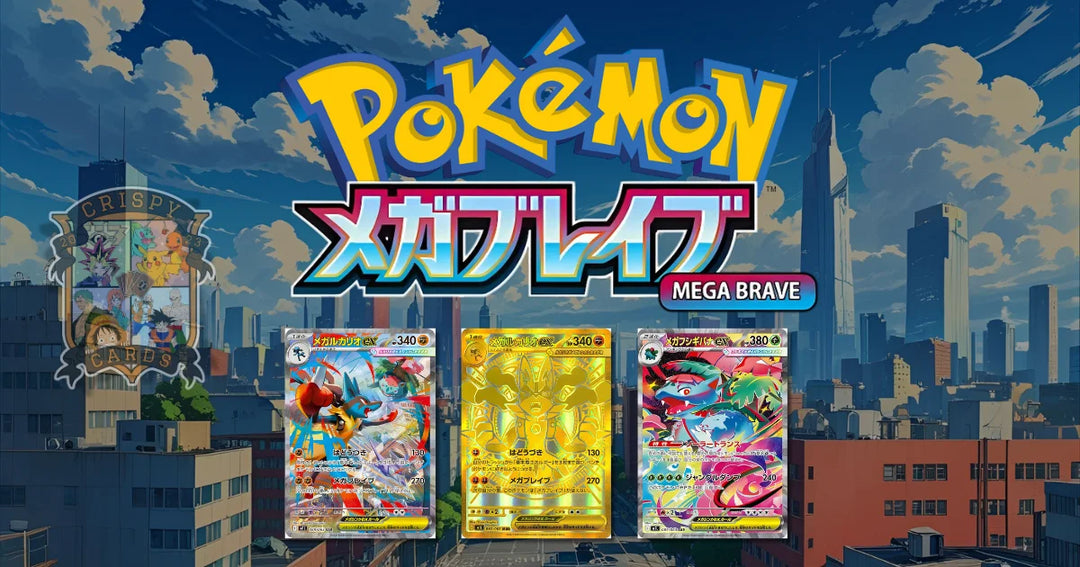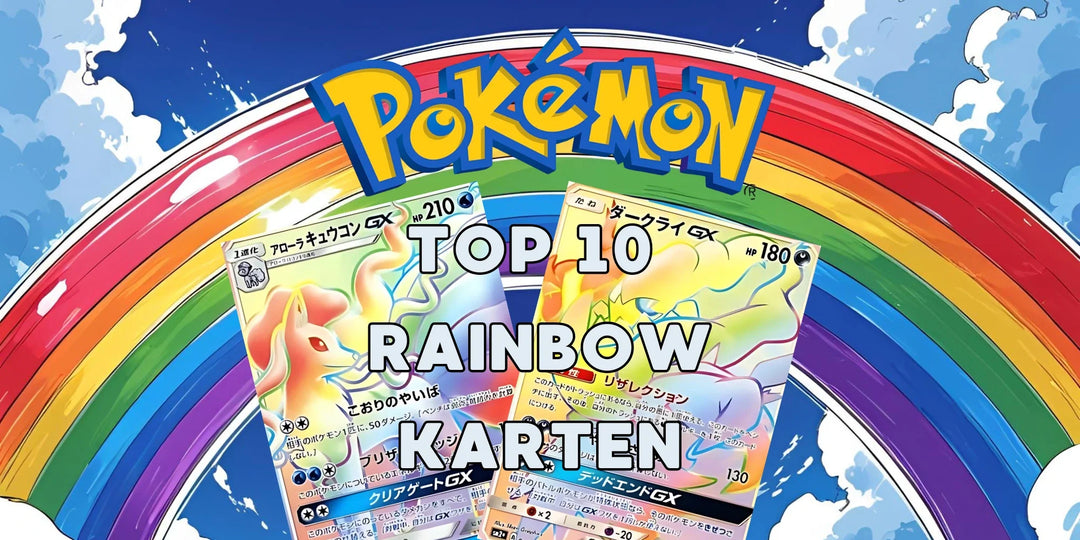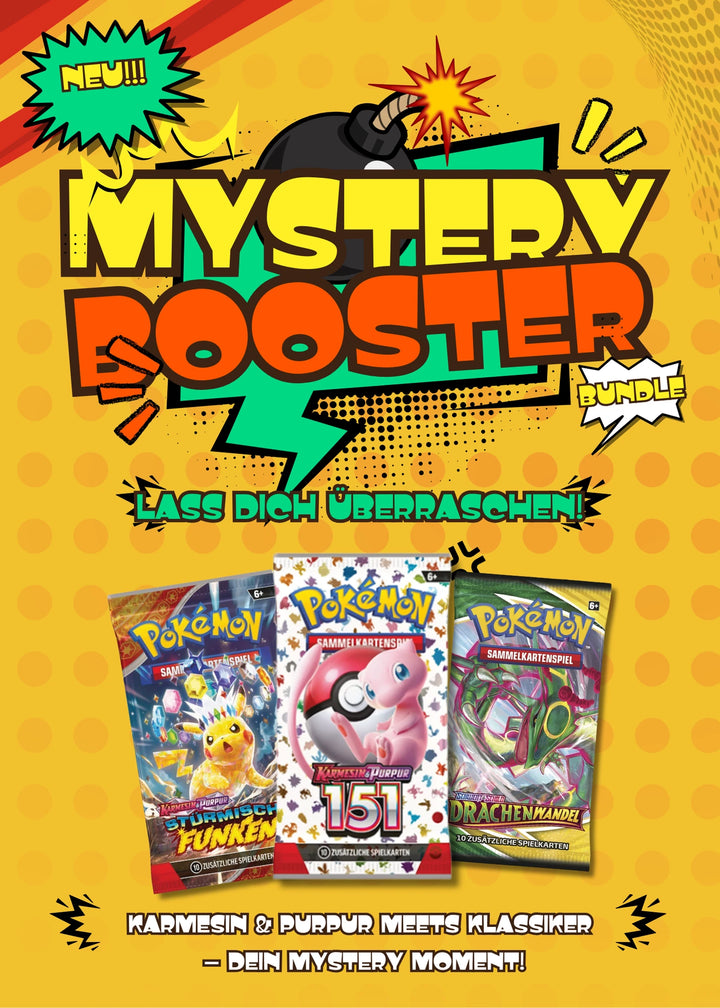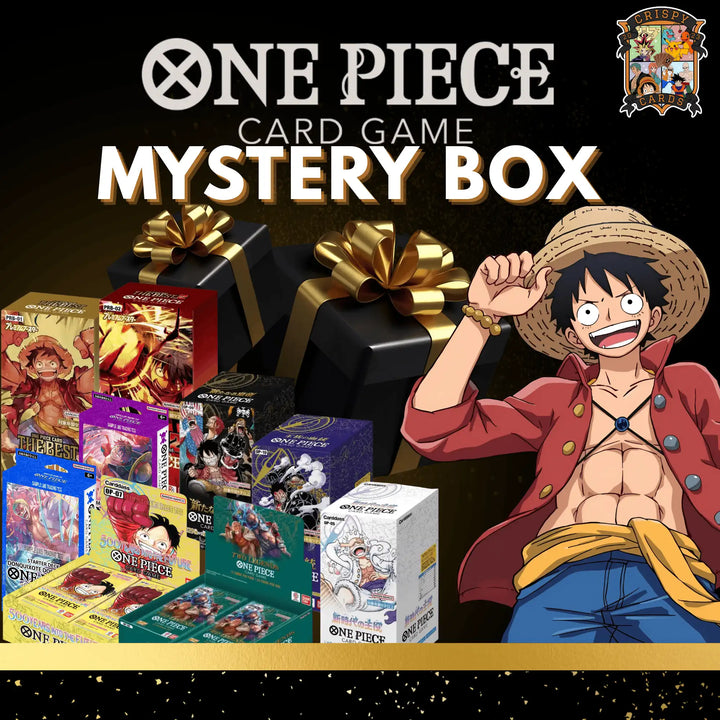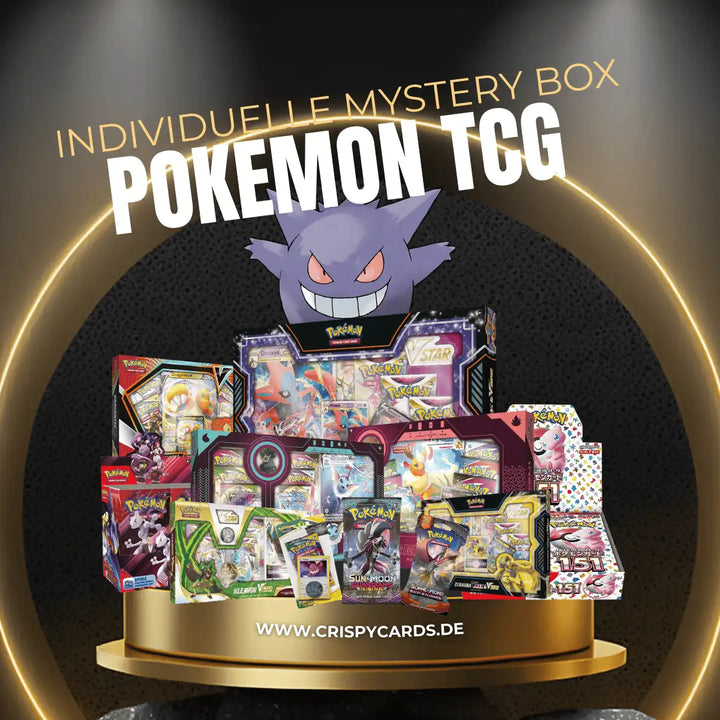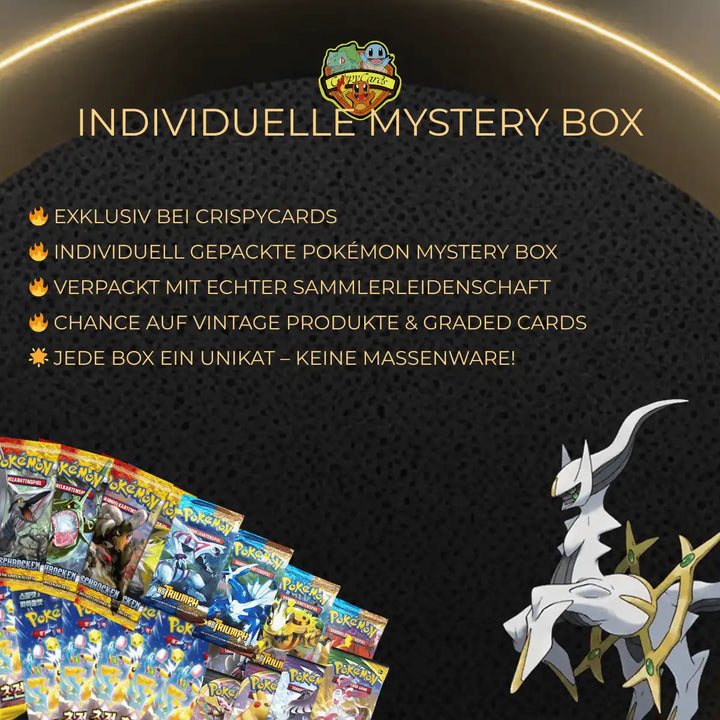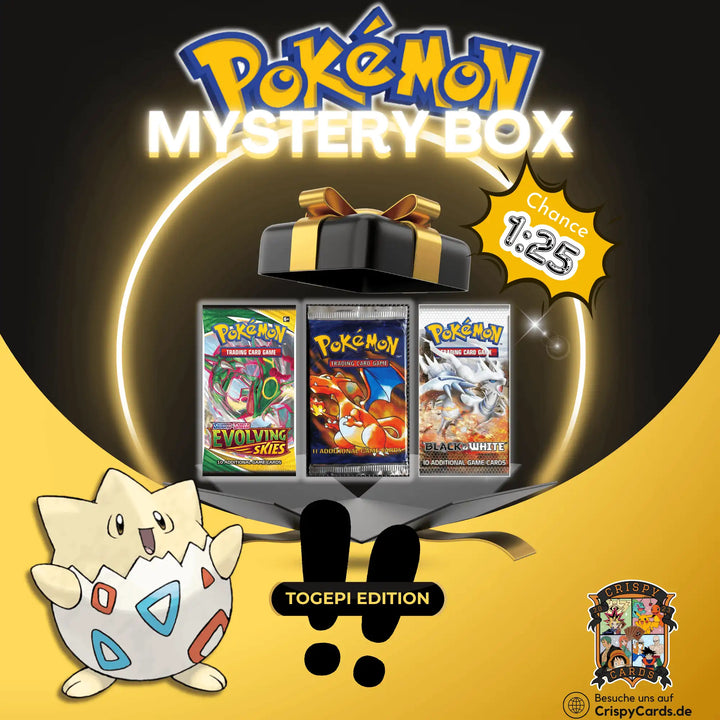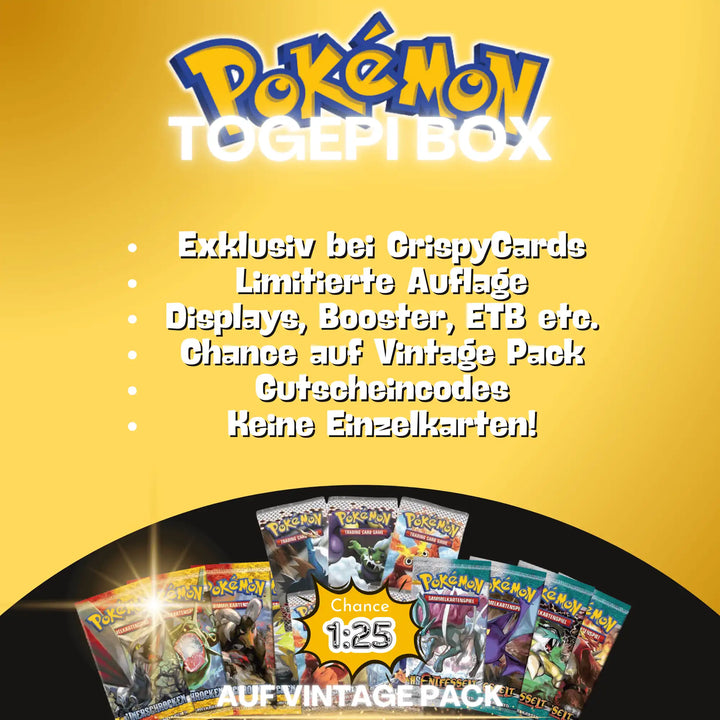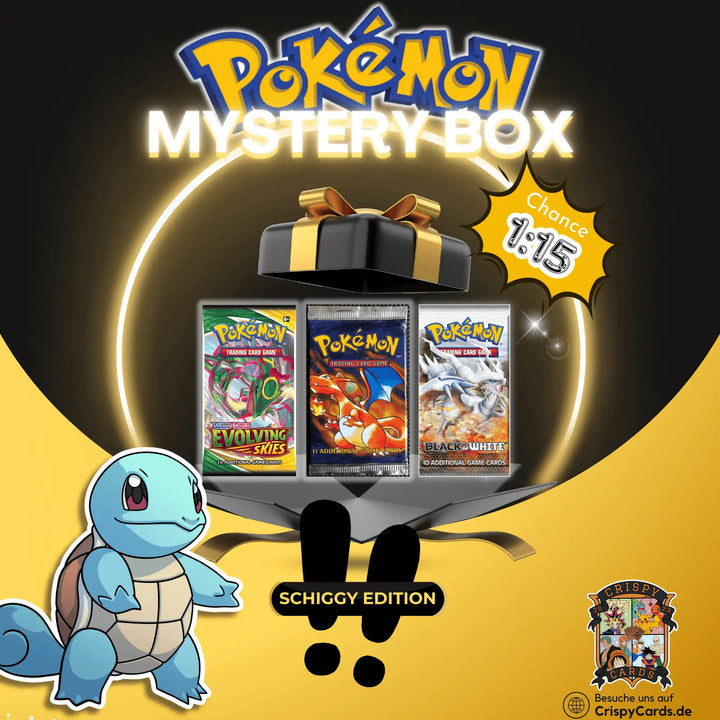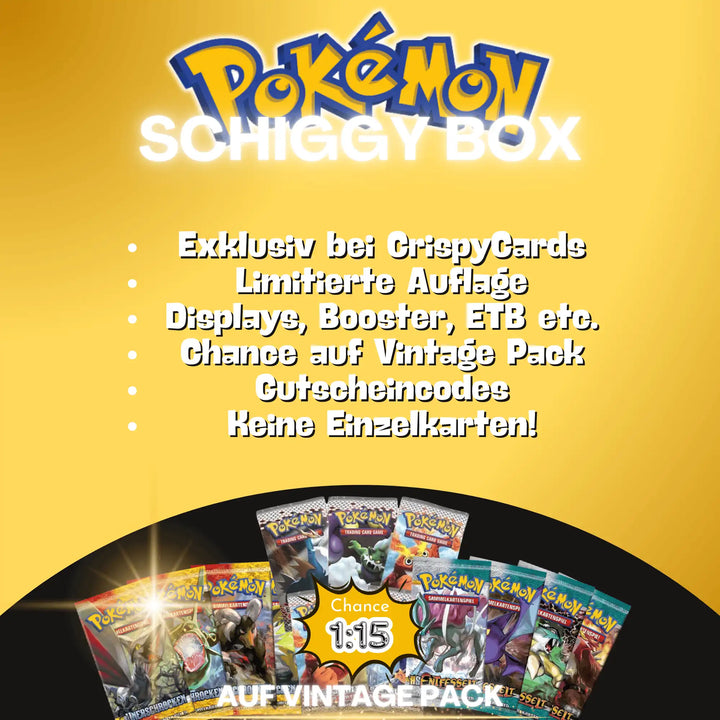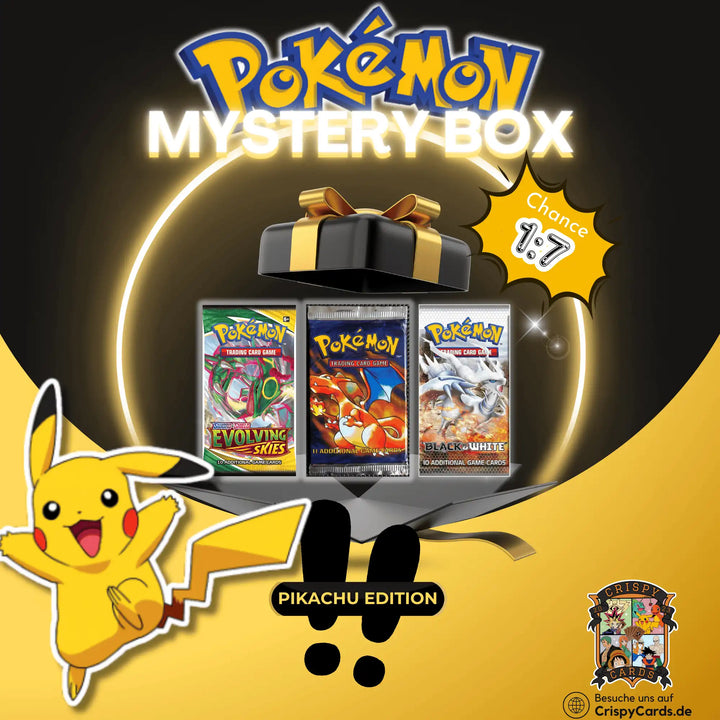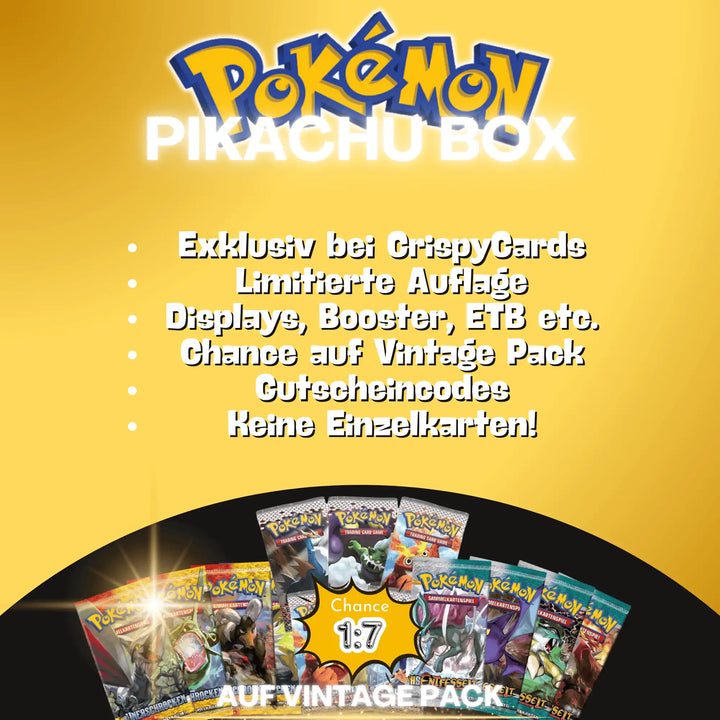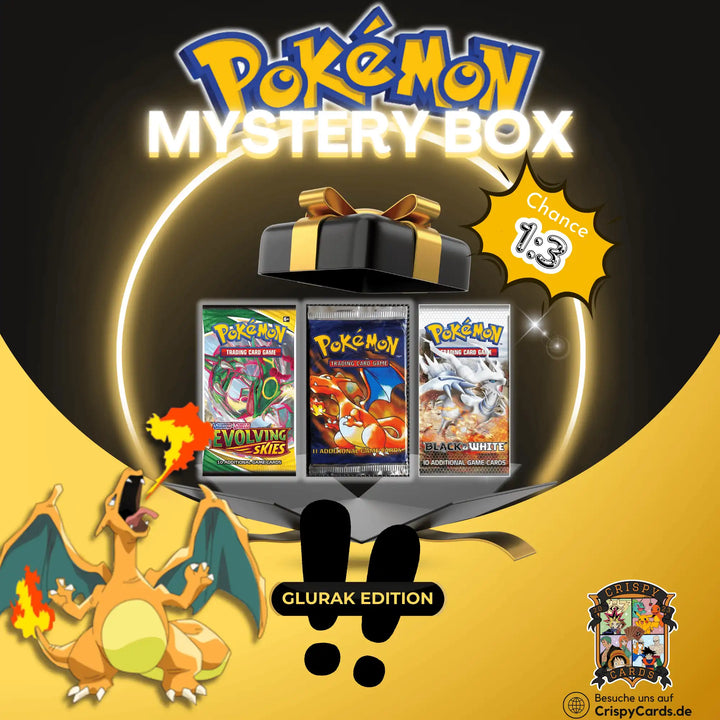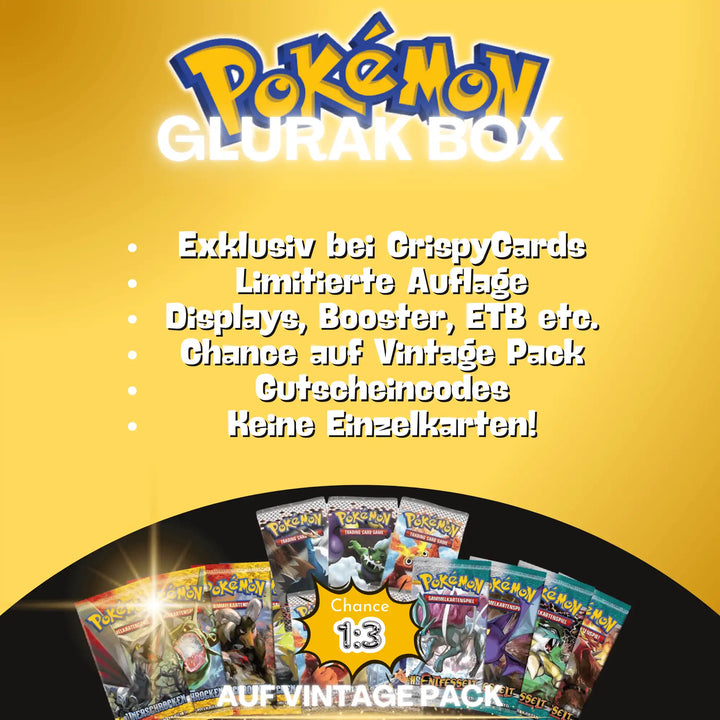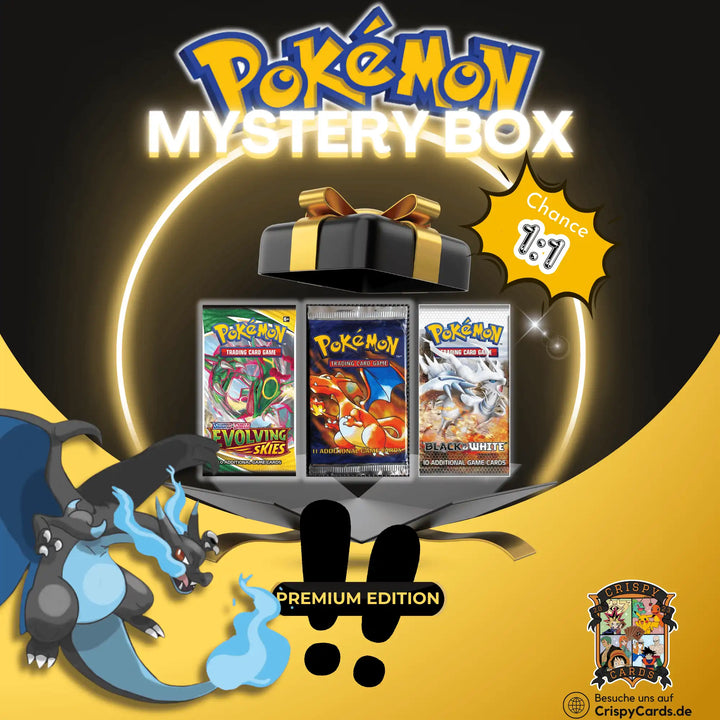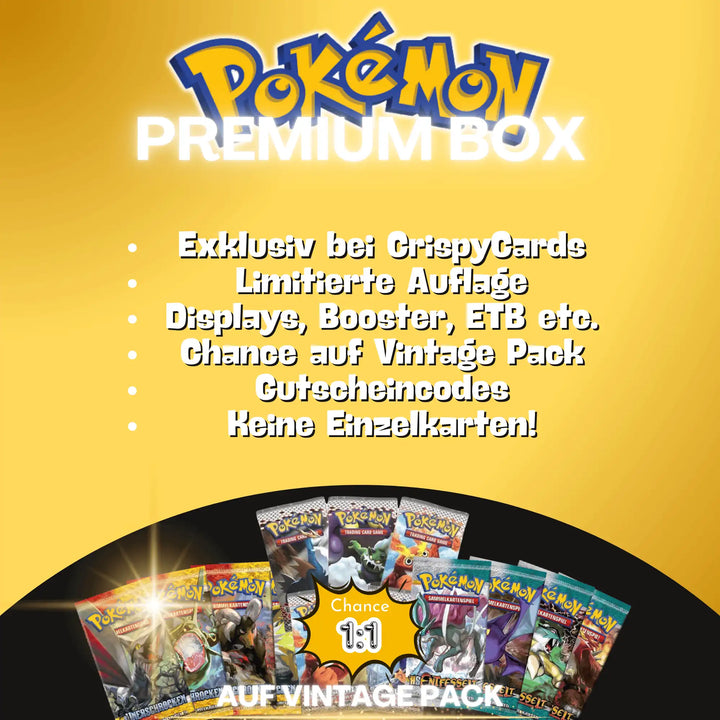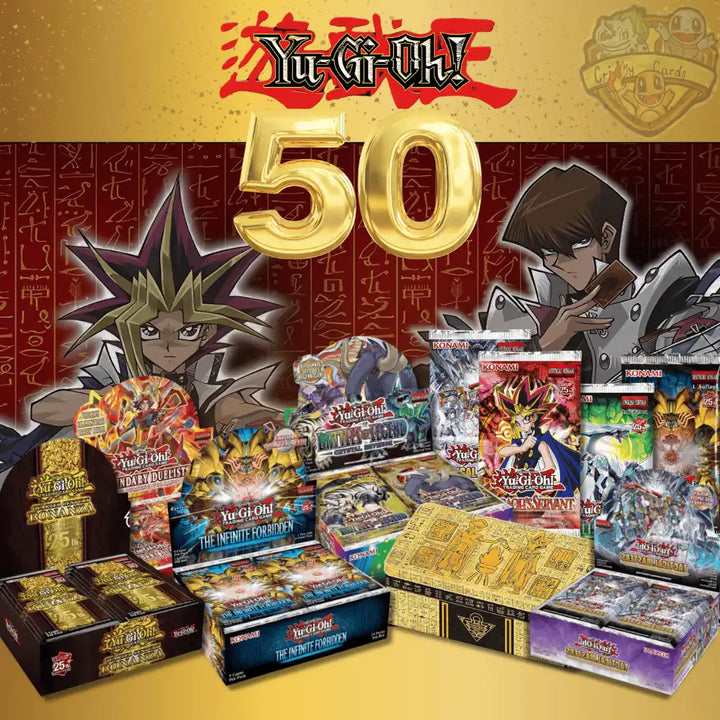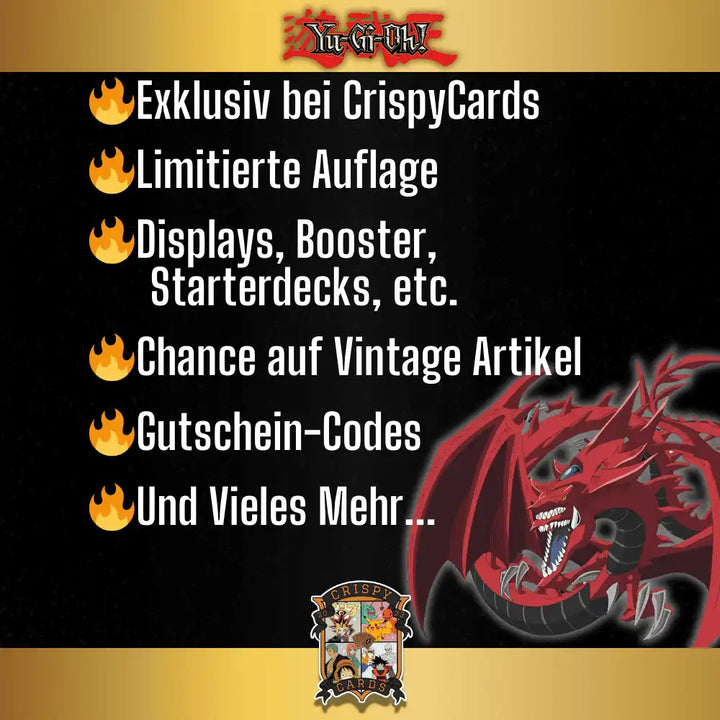It's high time for a One Piece TCG guide , as the game has been experiencing enormous hype in 2023. The One Piece Trading Card Game was officially released on December 2, 2022 , by Bandai, the company behind the Digimon TCG. This new card game is based on the hugely popular manga and anime series "One Piece," which has a huge fan base around the world. With more than 1,000 episodes from the anime series alone, "One Piece" is a major player in the entertainment sector. The main character, Luffy, along with his Straw Hat Crew, aspires to become Pirate King. The launch of One Piece cards was an immediate success, and it quickly established itself as a leading collectible card game . In addition to the fun factor, One Piece cards are also known for their rarity and the associated high value.
Where can you buy One Piece cards?
An excellent place to purchase One Piece Trading Card Game products is the website www.crispycards.de. There you'll find a wide selection of One Piece booster boxes, individual boosters, and decks. Regular updates and the option to pre-order ensure you're always up to date.
What do the One Piece TCG products look like?
Currently, there are two main product types available: booster boxes and decks. Booster boxes contain individual booster packs, while decks are already fully assembled. The following images give an idea of what these products might look like.
Please note that this is only a selection of the available products and new sets are released regularly.


Different card types in the One Piece card game
Leader Card: This card leads the way and guides the other cards. The game ends as soon as it has survived five successful attacks. The Leadership Card can be used to attack other Leadership Cards or rested Character Cards.

DON!! :
DON!! cards act as the main resource in the game. All cards except your leader require DON!! to be played. You automatically receive two DON!! cards each round, up to a maximum of 10, which you can use at once. However, the starting player receives only one DON!! card on their first round.
However, you can use DON!! cards for more than just paying other card costs. Instead of using a DON!! card as a resource, you can place it under your leader or a character card to strengthen it. The DON!! card's buff is indicated at the bottom and reads: "+1000 Power this round."

Characters:
During the game, you will primarily interact with your own characters and those of your opponent. Character cards form the core of a deck. They possess combat power and effects that are crucial in battles and can also be used for counterattacks. They can attack your opponent's leader or tapped characters.

Portgas D. Ace, a character card, costs 7 DON!! to play and has 7000 Special combat power.
Event:
Event cards are used to utilize one-time effects . Depending on your experience with other TCGs, you might associate them with terms like option, spell, sorcery, etc. Playing event cards also requires DON!! . Once you play the card, its effect is activated, and it is then immediately removed from the game. Some event cards can also be used as countermeasures . However, unlike character cards, you must pay the DON!! cost for these.

Some event cards also have a counter effect, similar to certain character cards.
There are also event cards with a counter effect. This can be activated during defense, but requires discarding the event card from your hand.
Stage:
A Stage card grants you a lasting effect. Each player can have a maximum of one Stage card on the field at a time. Similar to Character cards, you can play a new Stage card if you already have one, but you must discard the old one (the limit for Character cards is 5). Playing a Stage card also requires DON!!, but then it remains in play permanently.

Onigashima Island is a so-called stage card. Once played, it provides you with continuous effects that you can activate.
Before the game: How to build a One Piece deck?
To play the One Piece Card Game, you need a deck consisting of 61 cards: 50 character, event, and stage cards, one leader card , and 10 DON!! cards.
Your main deck, without DON!! and Leader, will then contain 50 cards .
Rules: Number restriction
The number restrictions are as follows: Each player may only have one Leader card , and each player may only have 10 DON!! cards at their disposal. For all other cards, each card may appear in the deck a maximum of four times .
It doesn't matter whether they are so-called alt-art cards with a different card face; the card number in the bottom right corner is what counts. However, certain cards can sometimes be too powerful and dominate the metagame. To prevent this, Bandai can impose stricter restrictions on individual cards. In such cases, a card may only be included once in the deck, instead of up to four.
The list of restricted cards is maintained on the game's website, and tournament rules will reference this list early on.
The list of banned cards can be found here: https://en.onepiece-cardgame.com/rules/restriction/
Rules: Color Restriction
The color restriction is a rule used in some card games to restrict or limit the use of cards of certain colors in a deck. The color restriction states that your deck may only contain cards that are the same color as your leader card . If your leader is blue, you may only include blue cards in your deck. Green cards would not be allowed. If your leader is both red and green, you may include both red and green cards in your deck.
Rules: Life Points
The Leader card shows your life points, represented by a stack of Life Point cards. At the beginning of the game, both players' Leader cards are placed face up.
After each player draws and keeps their hand, they place X cards face down on their life pile, where X is their leader's life total. So, if your leader has 5 life points, you place 5 cards on your life pile before the game begins . If your leader is attacked and defeated, you lose one life point and take the top card of your life pile into your hand.
If this card has a trigger effect, you can choose whether to activate it and reveal the card face up accordingly. Remember not to add the removed life point card to your hand until you're sure you want to use the trigger effect . Please note that not all cards have a trigger effect. If your leader is defeated in battle and you have no life point cards left, the game ends and you lose.
Rules: Pay costs
To pay costs, for effects, or to play cards, you must have a sufficient number of untapped DON!! cards. The DON!! cards must be face up and in your cost area, where DON!! is revealed at the beginning of the round.
To use DON!! cards as a resource, they cannot be placed beneath a character or another card. Once you have DON!! available, you can begin spending it. To do so, you must tap ("remain") the number of DON!! cards specified as the play cost . Once tapped, the cards are consumed until they are untapped, which usually only happens at the start of your next turn.

One Piece TCG Guide – How to play the One Piece card game?
The goal of the game is to defeat the opponent's leader by reducing their life points to 0. Stage, event, and character cards are used to achieve this goal. During the game, you will receive more cards each turn to adapt and strengthen your strategy.
One Piece TCG Guide – How does a round work?
In the One Piece Card Game, a round is divided into several phases, which are explained in more detail below:
-
Refresh Phase : All your tapped cards are untapped, and all DON!! cards attached beneath other cards are returned to your cost area. The DON!! cards are returned untapped.
-
Draw Phase : You draw a card. The starting player does not draw a card during their first turn.
-
DON!! Phase : Draw two DON!! cards and place them untapped in your cost area. The starting player reveals only one DON!! card on their first turn. If you only have one uncovered DON!! card left, only one is revealed.
-
Main Phase : This is where the actual game takes place. During this phase, you can play character, event, and stage cards, activate effects, distribute DON!! cards to characters and your leader, and attack. You decide when your main phase ends.
-
End Phase : Immediately before the end of your turn, effects such as [End of Turn] effects can still be activated. This ends the turn, and after the End Phase, your opponent's turn begins.
One Piece TCG Guide – How do the battles work?
Battles can be initiated either by the leader or by character cards. They attack either the opposing leader or a tapped opposing character. The sequence is as follows:
-
Declare Attack : You specify which card you want to use to attack each of your opponent's cards. To do so, tap your card and select an attack target.
-
Activate Effects : If there are any effects that trigger or can trigger when attacking, they will now activate. This includes, in particular, effects like [When Attacking].
-
Block : The attacked player, if he has cards with the <Blocker> ability, can activate the <Blocker> effect to redirect the attack to the card with <Blocker>.
-
Counter : The attacked player can now remove character or event cards with a counter effect from their hand to activate the corresponding counter effect. Characters provide additional combat power for the current battle through their counter effect, while event cards can provide additional counter effects. The defending player can temporarily increase the combat power of their cards in this way. There is no limit to the number of counter cards that can be used per battle. However, since the cards are removed from the hand when the counter effect is used, they may eventually run out.
-
Determining the Battle Winner : The battle power of both cards involved is compared. If the attacking card has the same or greater power as the attacked card, the attacker wins. If a character is attacked and the attacker wins, the attacked character is removed. If the leader is attacked and the attacker wins, the result depends on the opponent's life points. If the attacked leader has no life cards left, the game ends. If at least one card remains, it is removed from the life pile. Effects like <Double Attack> can remove multiple opponent's life points in a single attack. When life points are removed, the defending player always puts the top card of their life pile into their hand. If the card has a trigger effect, they can alternatively choose to reveal the card and activate the effect. If the attacker loses because the defending card has more power, nothing happens and no cards are removed.
-
End of Battle: At the end of the battle, effects may still be activated, for example, if the timing is [End of Attack]. These effects are activated first. Afterward, all ongoing battle effects, such as counter or [When Attacking] effects, are removed. The power gained from counter effects disappears after the battle.
One Piece TCG Guide – When the game ends
As already described, the game ends when one of the leaders is defeated in battle and has no life points remaining, i.e., when the life point pile was already empty before the battle. There is also another way to end the game: If a player's deck becomes empty, the game ends immediately, and that player loses. As soon as the last card in the deck is drawn, all effects are ended, and the game ends immediately. This ensures that effect chains can no longer influence the outcome.

One Piece TCG Guide – What rarities are there?
There are a total of seven different rarities:
L (leader),
C (Common),
UC (Uncommon),
R (Rare),
SR (Super Rare),
SEC (Secret Rare) and P (Promo Card).
Promo cards are particularly sought after and can be won or acquired through tournament participation.
What are One Piece Stage Tickets?
These are cards placed on the playing field and represent different locations. Only one stage card can be active at a time. Similar to the Pokemon Stadium card.
What are One Piece Event Cards?
These cards feature excerpts from the anime series and offer special, one-time effects when used.
Can I play One Piece with more than two players at the same time?
The official rules of the One Piece Card Game are designed for two-player play. Unofficial versions have been developed over time to accommodate multiplayer formats!
Conclusion
What do we think of the One Piece card game?
The One Piece card game offers an exciting way to experience the adventures of Luffy and his crew. It's advisable to watch the anime first to get to know the characters and their characteristics before devoting yourself to collecting cards. The cards can not only be a lot of fun but also have considerable value, especially the rare and special versions. If you search for One Piece on eBay and filter for items over €1,000, you'll see that the cards can have a significant monetary value. We're avid players ourselves and enjoy participating in the occasional tournament. The hype surrounding the game speaks for itself, and we hope it will grow even more with new cards and features.

